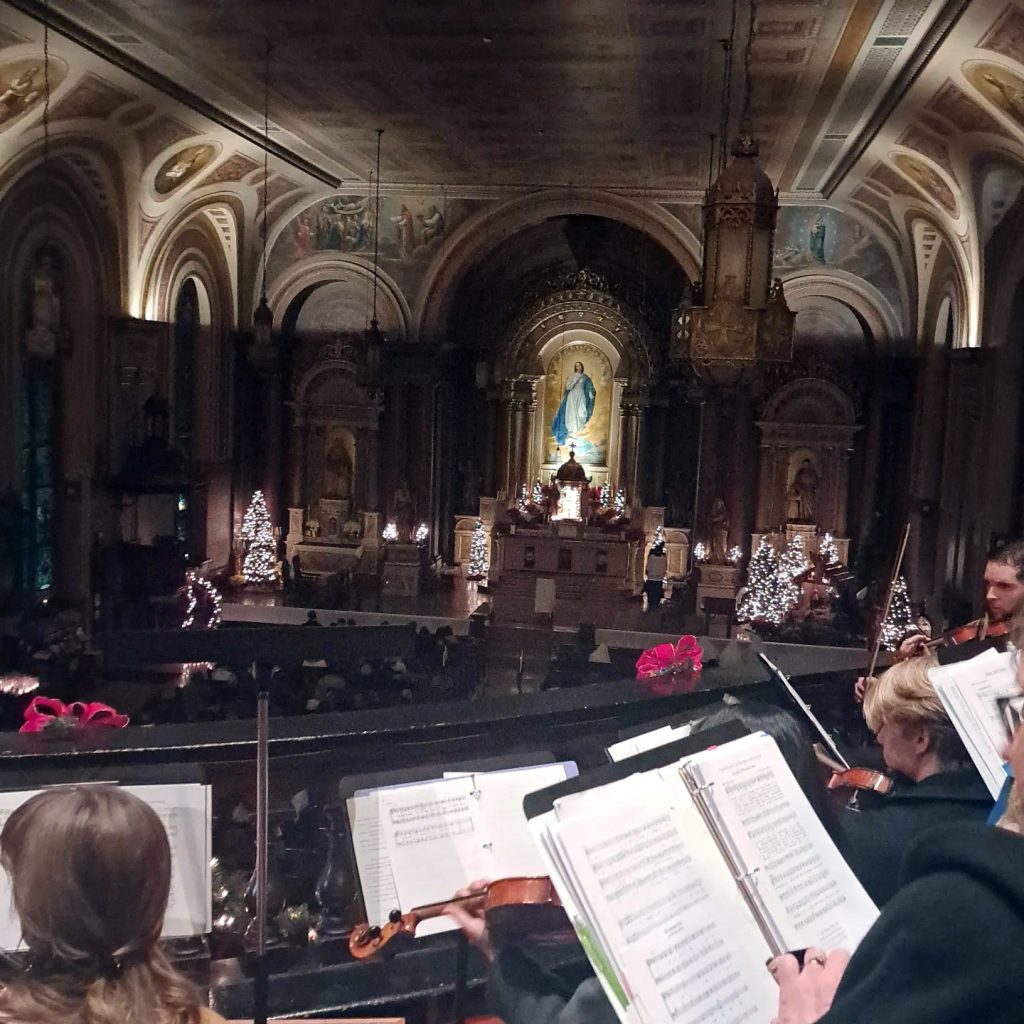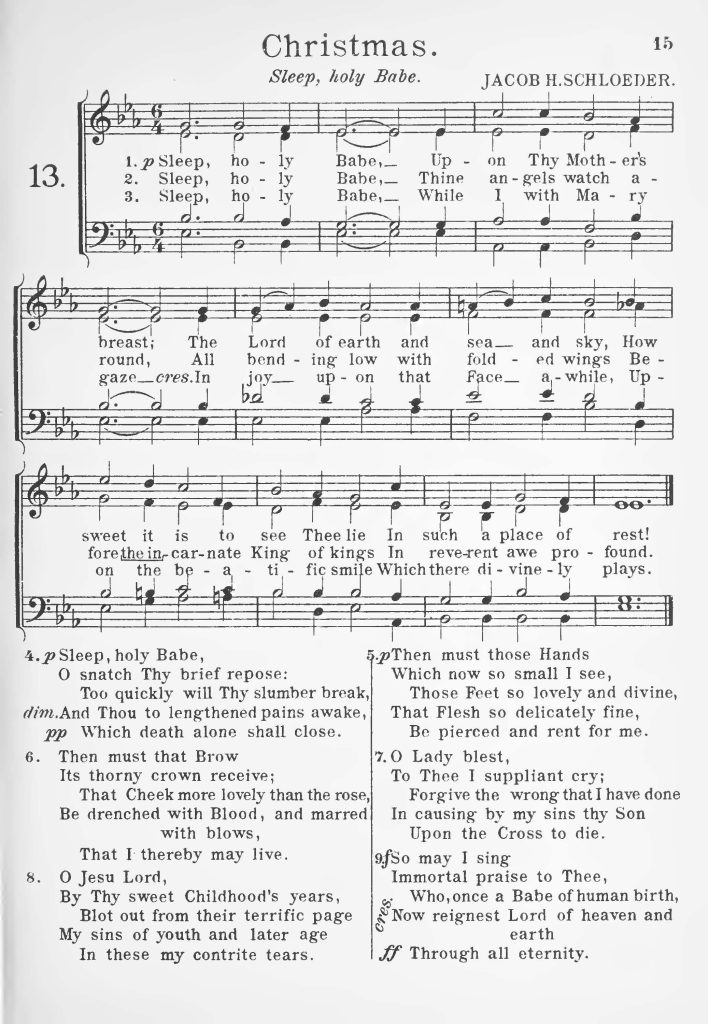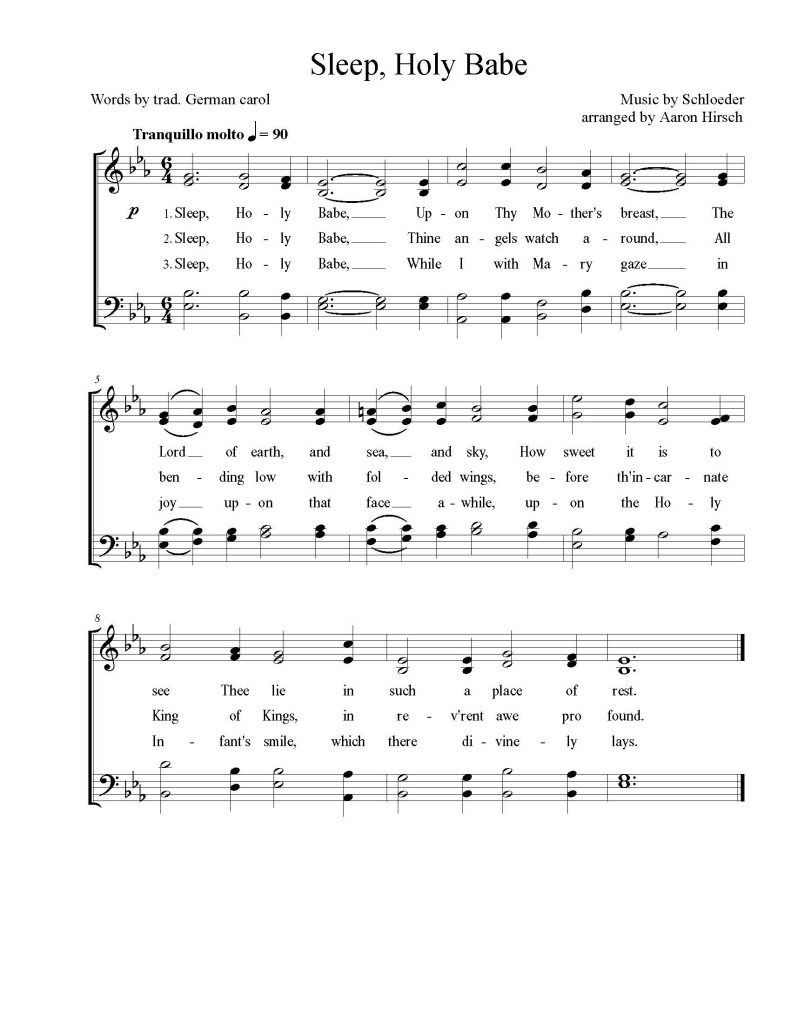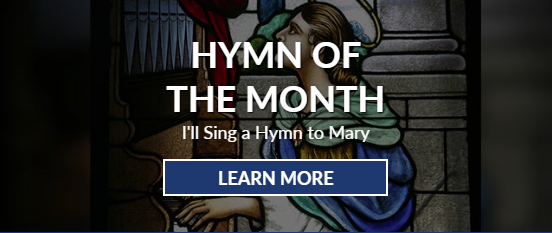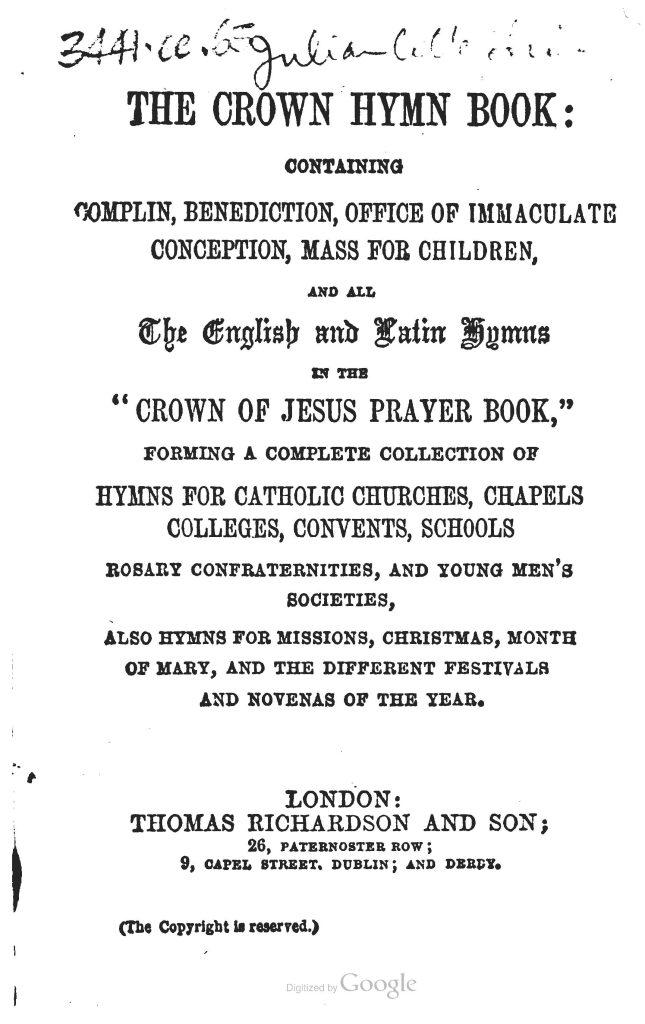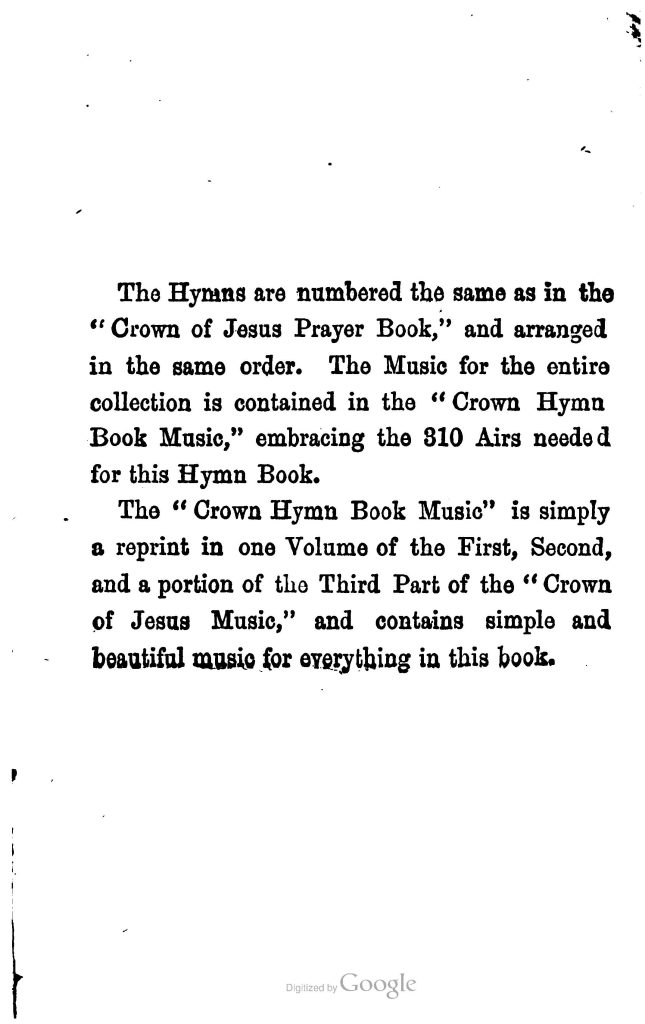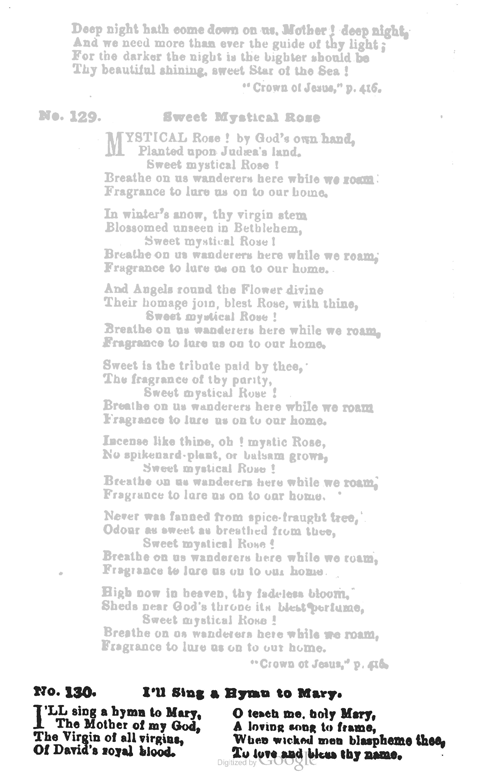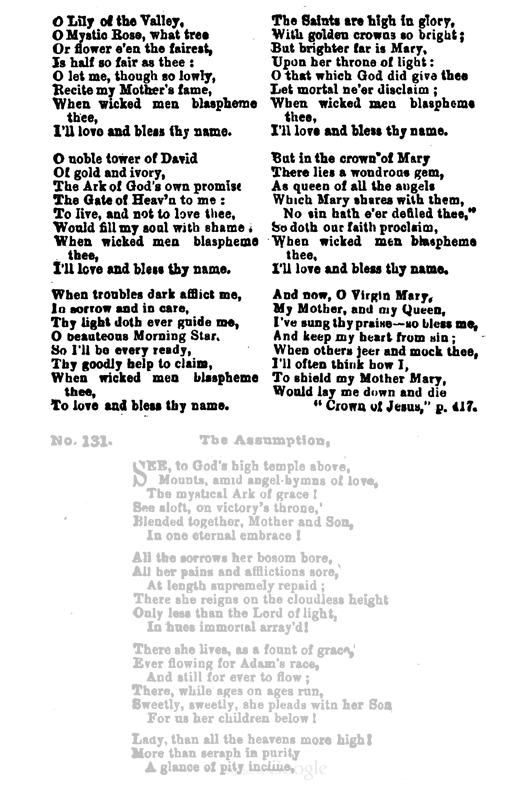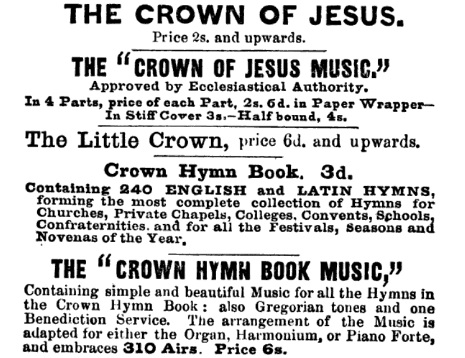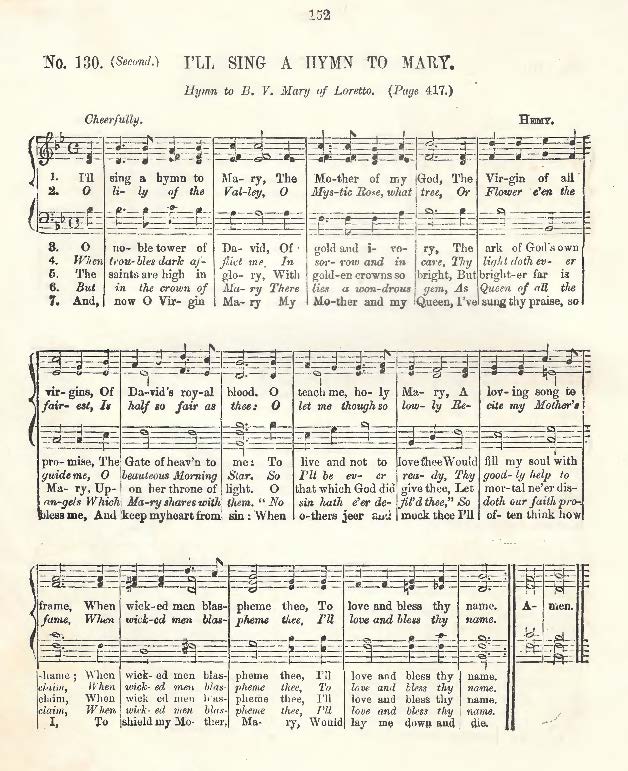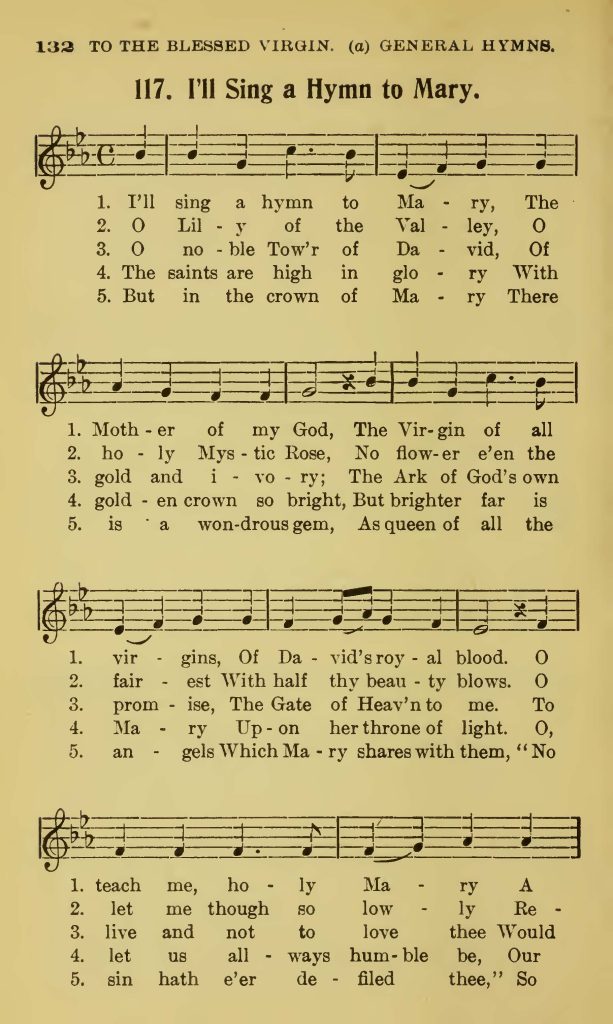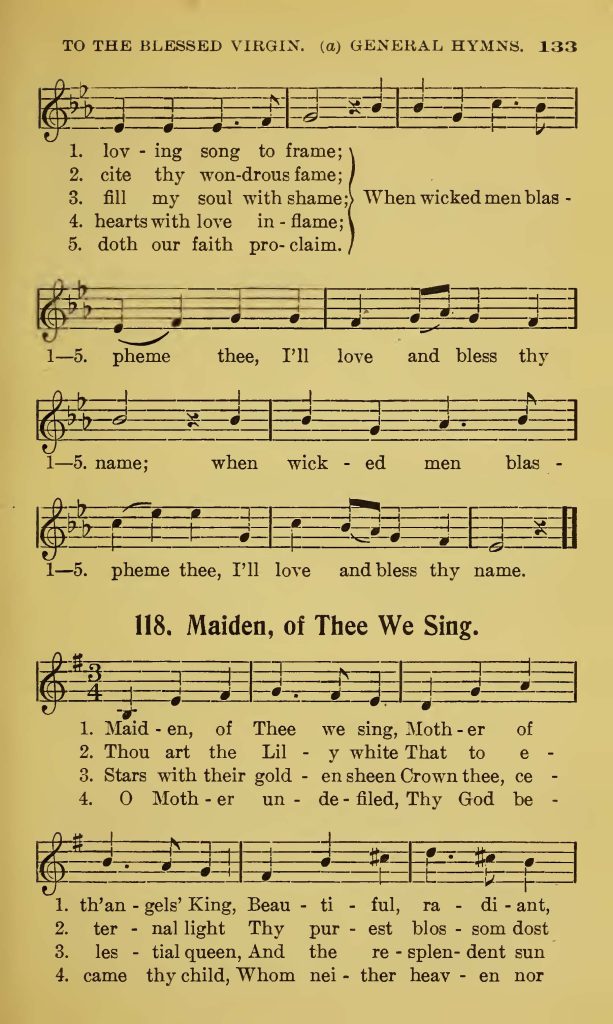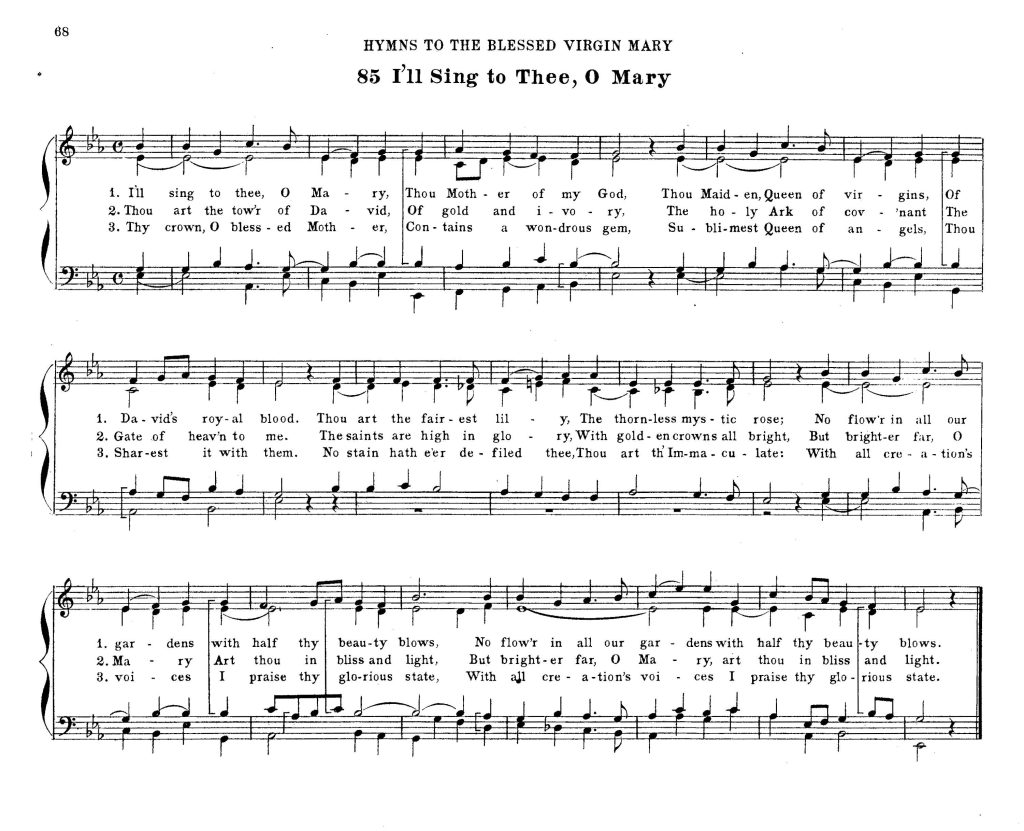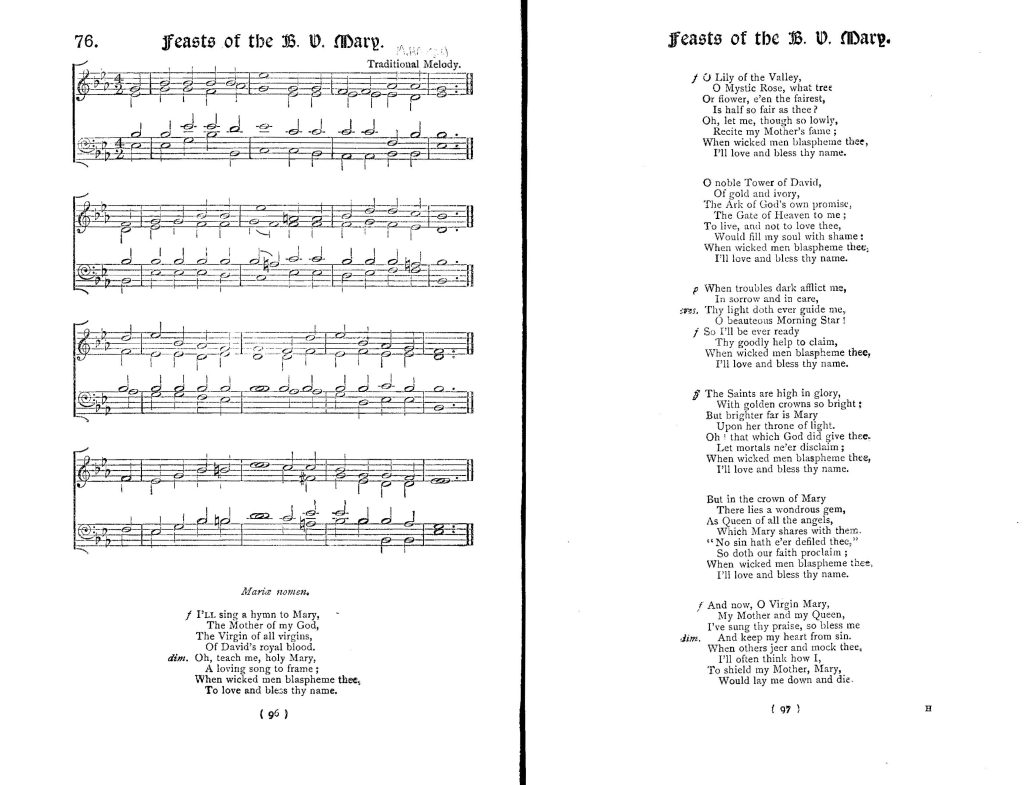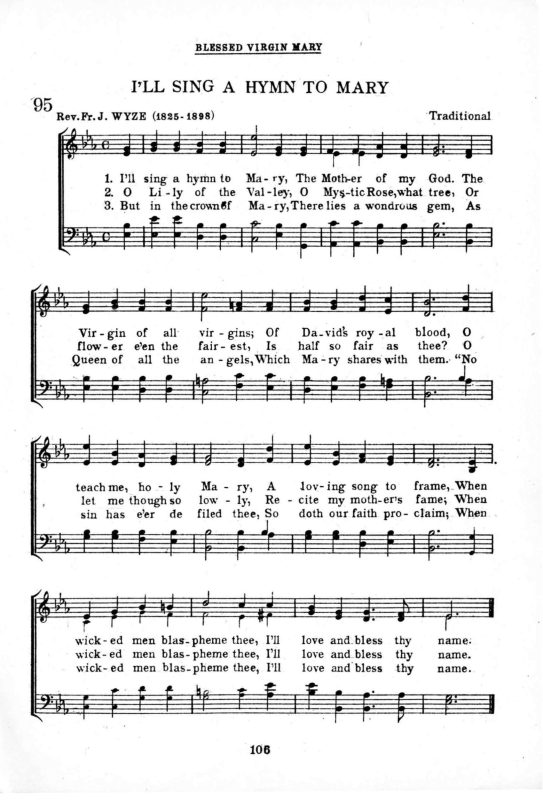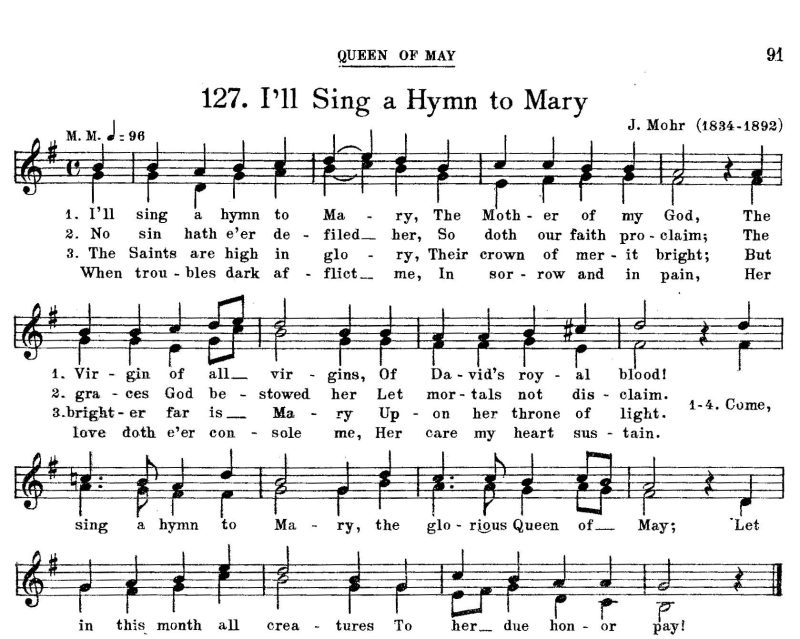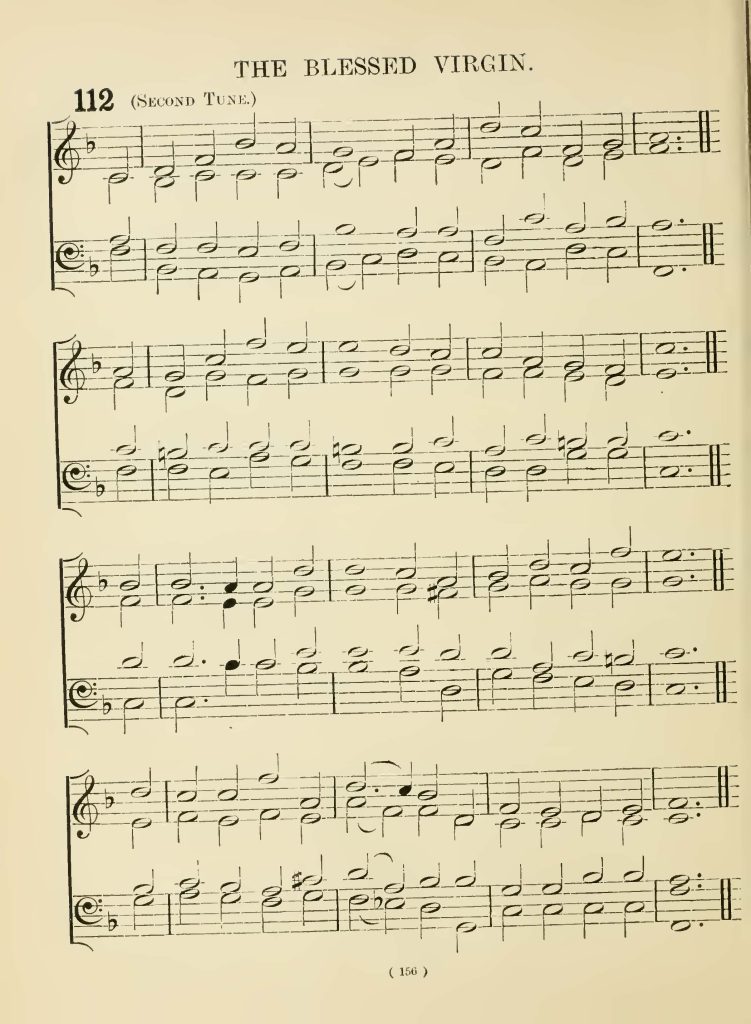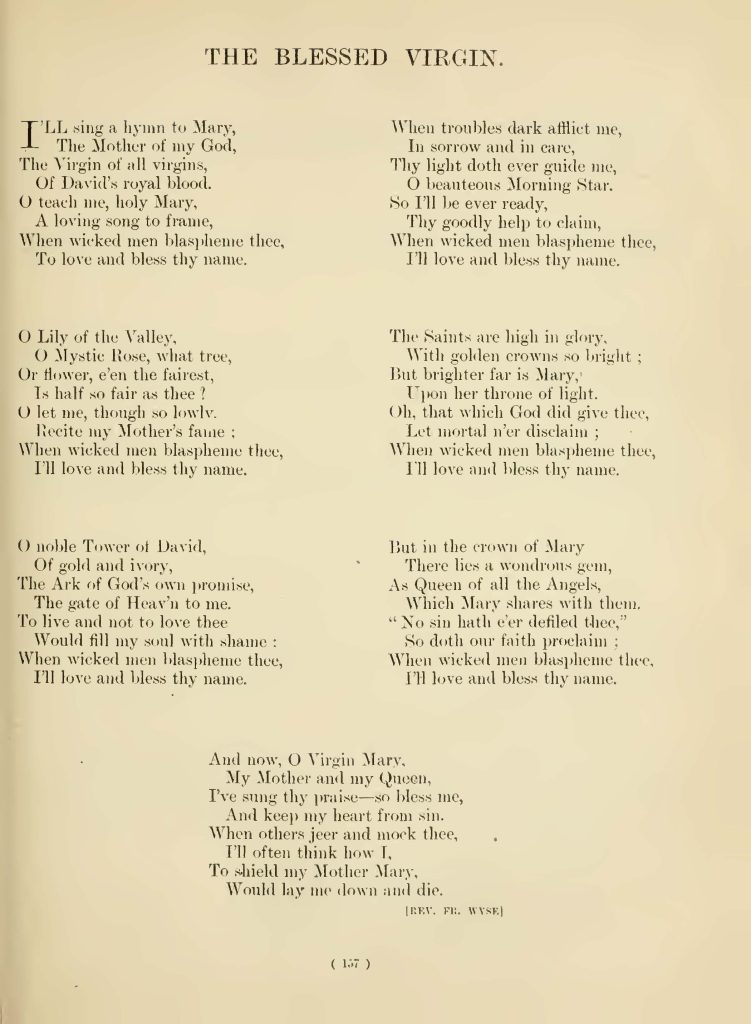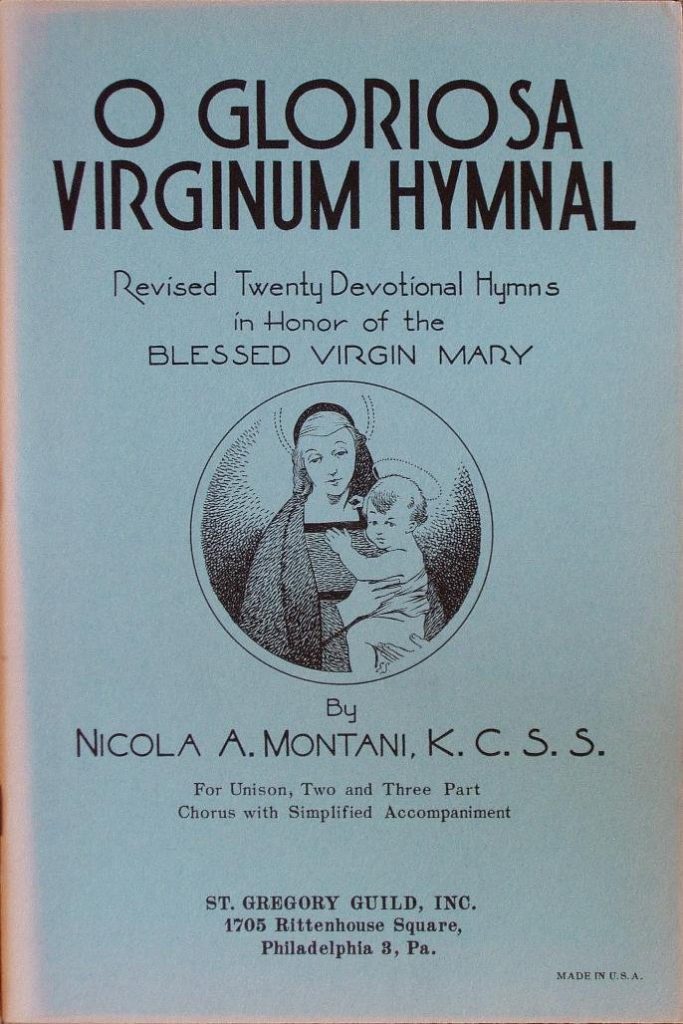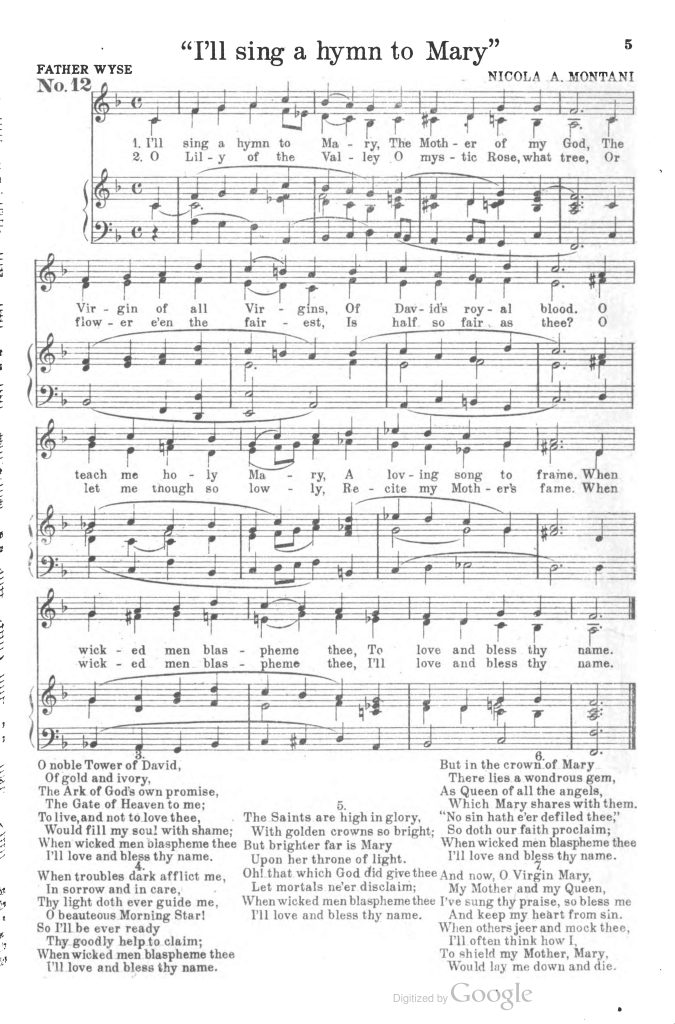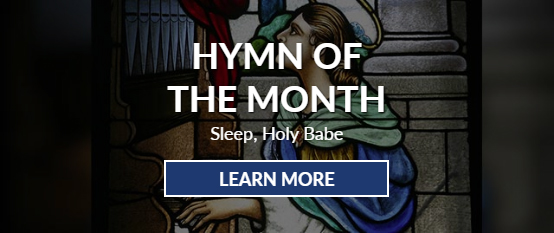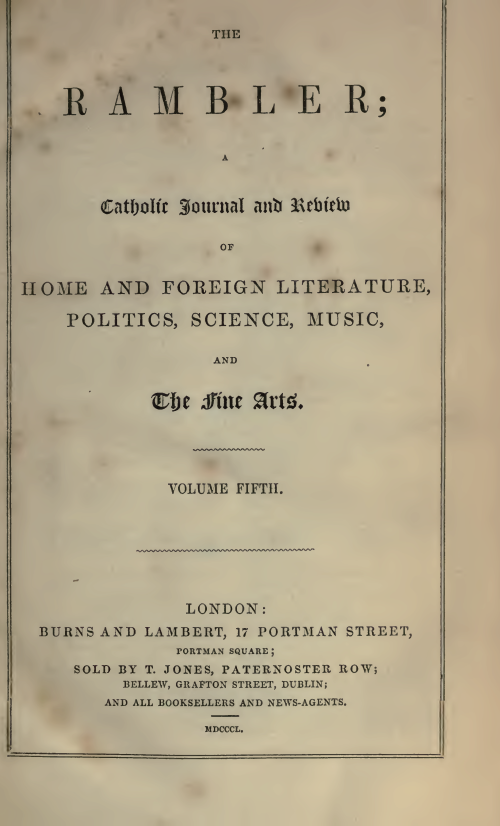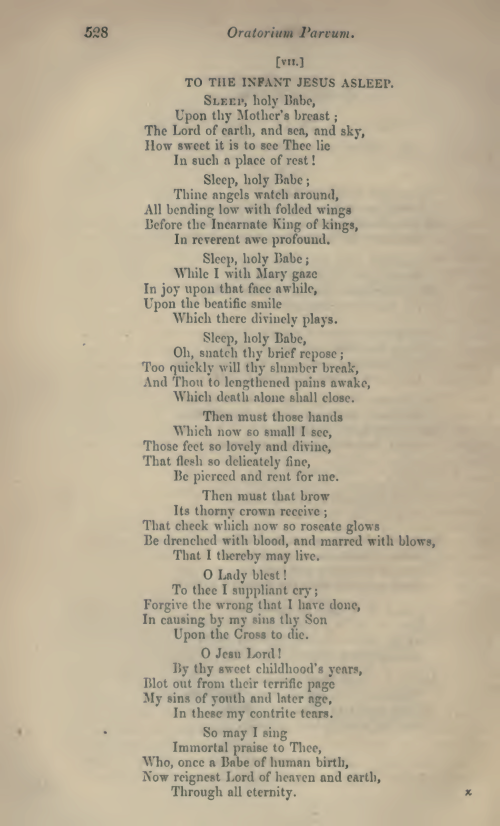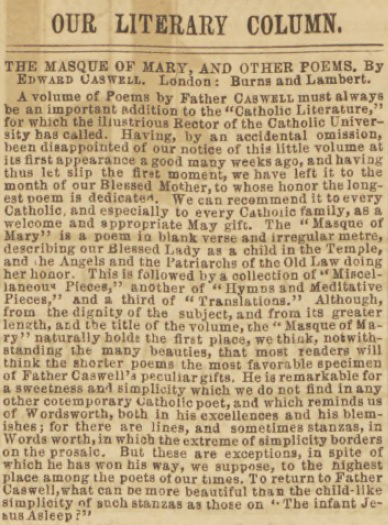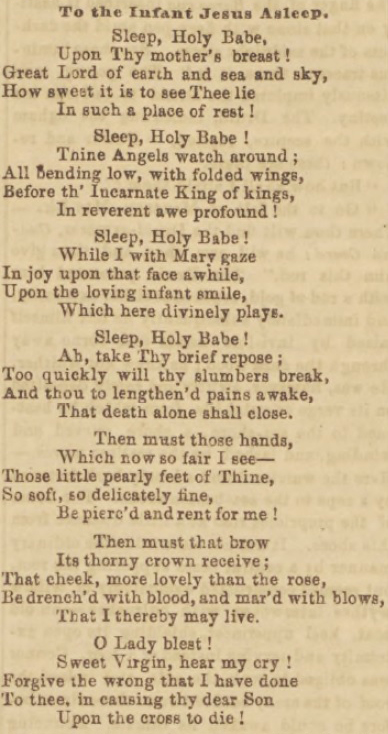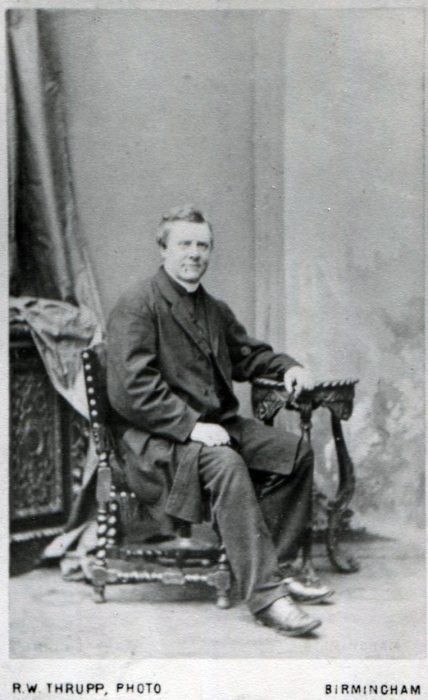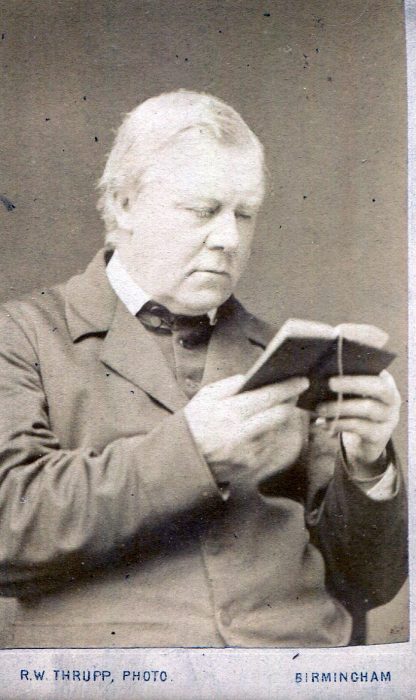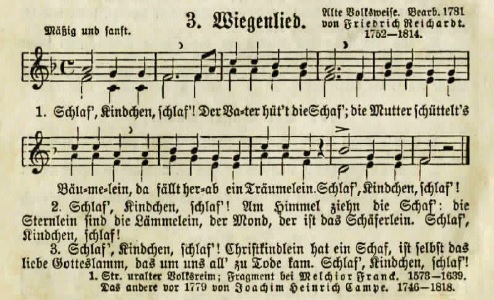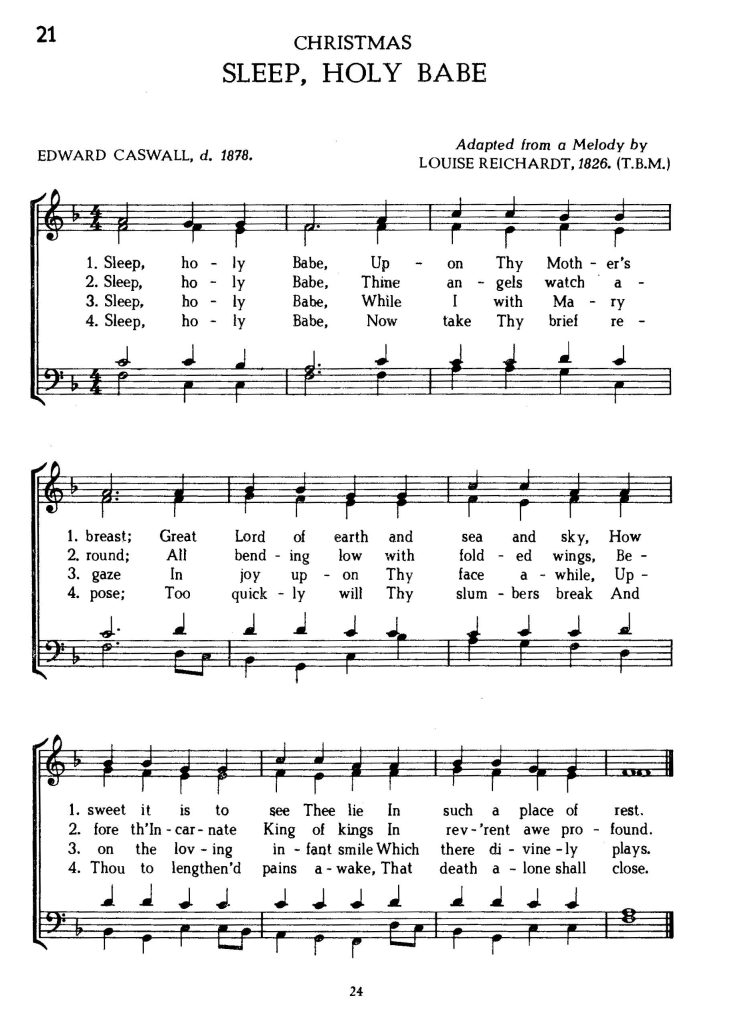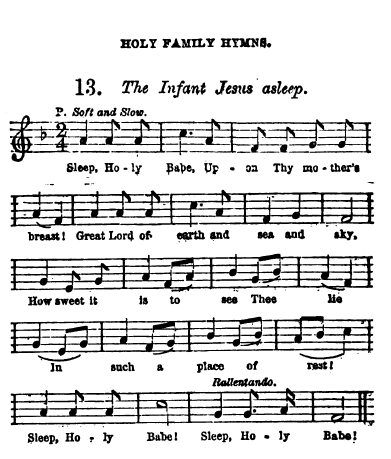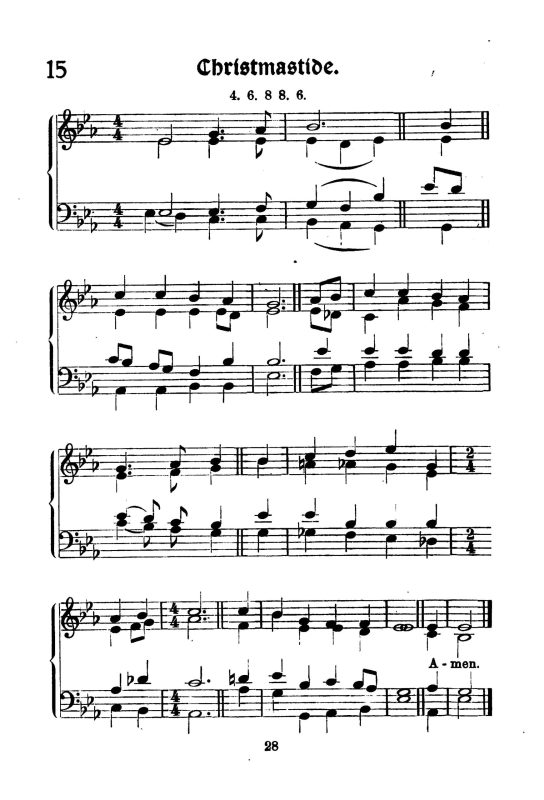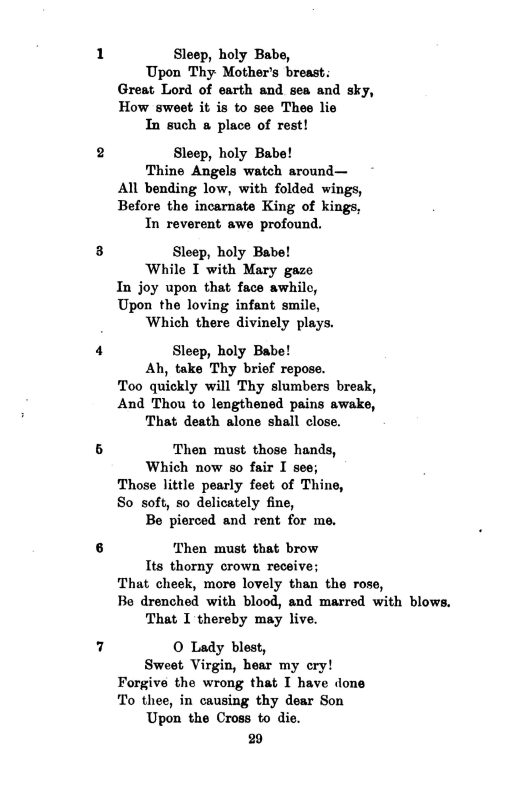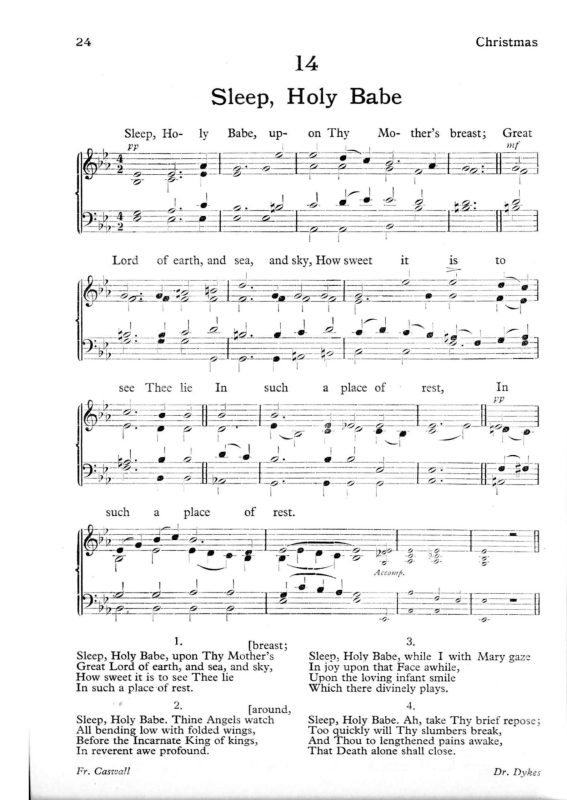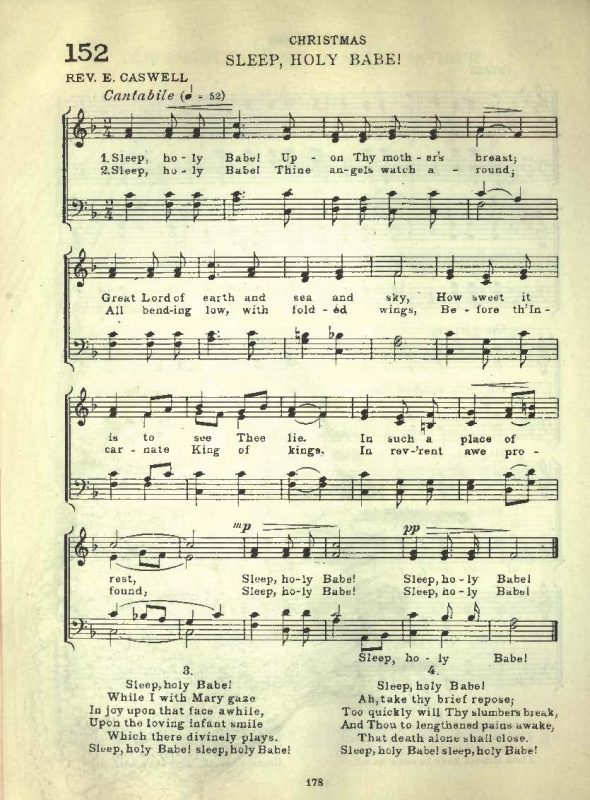Throughout his life, Father Caswall was a prolific writer. During his time at Brasenose College, a constituent college of Oxford University he published a number of literary works including The Oxonian – a series of papers on University life written with a humorist point of view. This was followed by his Pluck Examination Papers which he later published in a book The Art of Pluck – the caricature of these works was to enlighten the undergraduate on how to fail his examinations and in the lingo of the University to get plucked. The ability to write in satire and at the same time convey a moral point was a gift that Father Caswall possessed. These and several other publications where enormously successful and provided him a steady income which he would benefit from during his college days and in the future.
During his conversion journey to Rome, Father Caswall kept a journal that has remained unpublished, and its existence known only to a handful of people. He was a man of meticulous detail and observation and his eyewitness accounts of Roman Catholicism during his visit to Ireland in the summer of 1846 proved to be a turning point in his life.
On one occasion in 1846, on a summer evening, he witnessed a small group of poor worshipers praying in a Catholic chapel in Ireland. He observed that one person said the Lord’s Prayer as far as, as it is in heaven, and the others began at, give us this day our daily bread. Then the same person began another prayer, and the others began Holy Mary, and everything was in English. It was the first time he had heard any devotion to Our Blessed Mother and before the evening was over, he was kneeling down with them. Any Anglican preconceptions of idolatry left him, and he was consumed with the expression of love and humility of these poor men and women. From that point onward, he became devoted to the Rosary.
Almost two years after he joined the Catholic Church, Father Caswall published his first collection of hymns in 1849, the LYRA CATHOLICA, containing translations of all Breviary and Missal hymns of the Roman Breviary. Father Caswall was always working for the education of the poor and especially the children even during his curacy at Stratford-sub-Castle near Salisbury. A question that plagued him during his conversion journey was how the Latin liturgy could have any meaning for the average Catholic let alone the poor and uneducated.
During the summer of 1846 while in Ireland he attended a Requiem Mass for Pope Gregory XVI who had recently died. He was concerned and frustrated because he couldn’t follow the liturgy. How is it that the poor and uneducated understand the Latin liturgy and an Oxford graduate in the classics is lost? This was the underlying reason for his translations of the Roman Breviary – to publish in the English language for anyone who could read or to pray in private the Divine Office.
Father Caswall remained at the Birmingham Oratory until his death on January 2, 1878. Father Edward Caswall was named, along with Father Joseph Gordon and Father Ambrose St John, as one of the three Oratorians whom Newman deemed his greatest friends and most loyal and devoted laborer’s in St Philip’s vineyard.
There is so much more that could be written about Father Caswall but that is beyond the scope of this short write-up. His contributions to Catholic hymnody include such favorites as: At The Cross Her Station Keeping; Come Holy Ghost Creator Blest; Jesus the very thought of Thee; Joseph Our Certain Hope in Life; Joseph Pure Spouse; Sing My Tongue the Savior’s Glory; Ye Sons and Daughters of the Lord; Hark an Awful Voice is Sounding; Dear Maker of the Starry Skies; O Jesus Christ Remember; O Saving Victim Opening Wide; The Dawn Was Purpling O’re the Sky; See Amid the Winter Snow; When Morning Guilds the Skies; What a Sea of Tears and Sorrows; This is the Image of Our Queen; and many more hymns. He published several hymn books including LYRA CATHOLICA, 1849; the MASQUE OF MARY AND OTHER POEMS, 1858; and HYMNS AND POEMS, 1873.
Some of the details above were used with permission and were taken from EDWARD CASWALL: NEWMAN’S BROTHER AND FRIEND written by Nancy Marie de Flon and published by Gracewing in 2005. Nancy’s book is a wonderful biography of Father Caswall’s life and journey to Catholicism. An earlier biography of Edward Caswall was written by Edward Bellasis (1800-1873) an English lawyer and convert to Catholicism in the new edition of HYMNS AND POEMS published in 1908.

